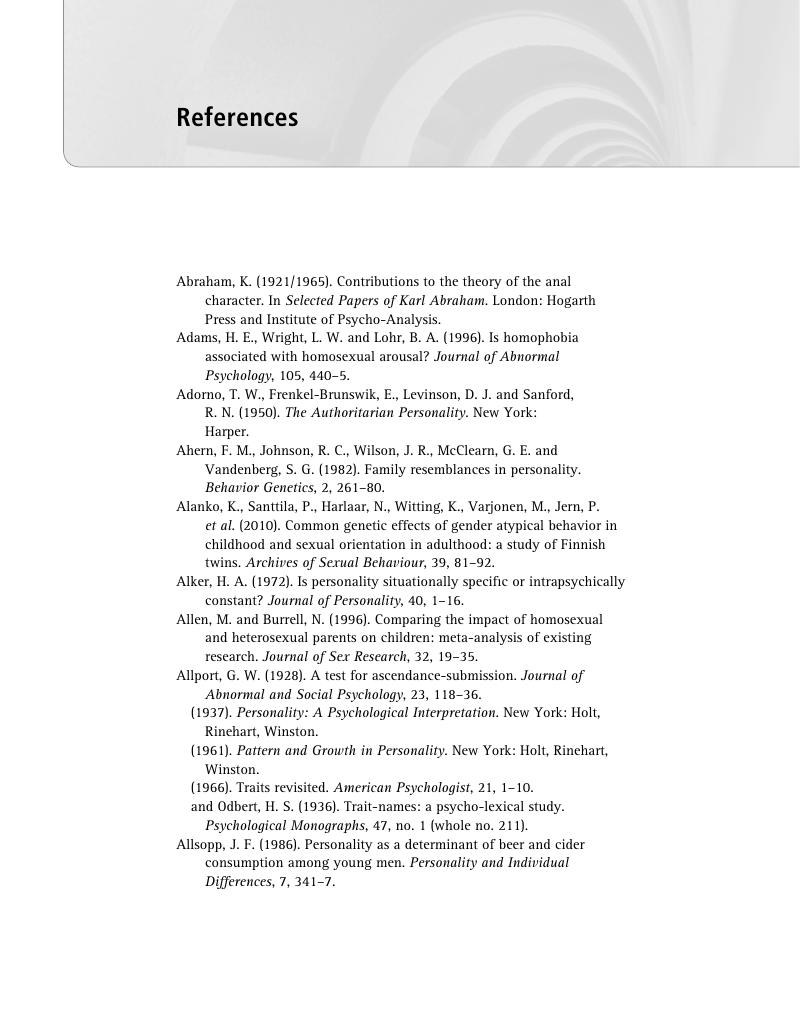Book contents
- Frontmatter
- Contents
- List of Figures
- List of Tables
- List of Boxes
- Preface to the third edition
- Preface to the second edition
- Preface to the first edition
- 1 Gideon's army: the study of individual differences
- Part I The surface
- Part II Below the surface 1: the biological line
- Part III Below the surface 2: the phenomenal line
- Part IV Below the surface 3: the motivational line
- Part V Examples
- References
- Author index
- Subject index
- References
References
Published online by Cambridge University Press: 05 January 2013
- Frontmatter
- Contents
- List of Figures
- List of Tables
- List of Boxes
- Preface to the third edition
- Preface to the second edition
- Preface to the first edition
- 1 Gideon's army: the study of individual differences
- Part I The surface
- Part II Below the surface 1: the biological line
- Part III Below the surface 2: the phenomenal line
- Part IV Below the surface 3: the motivational line
- Part V Examples
- References
- Author index
- Subject index
- References
Summary

- Type
- Chapter
- Information
- Levels of Personality , pp. 413 - 452Publisher: Cambridge University PressPrint publication year: 2012

